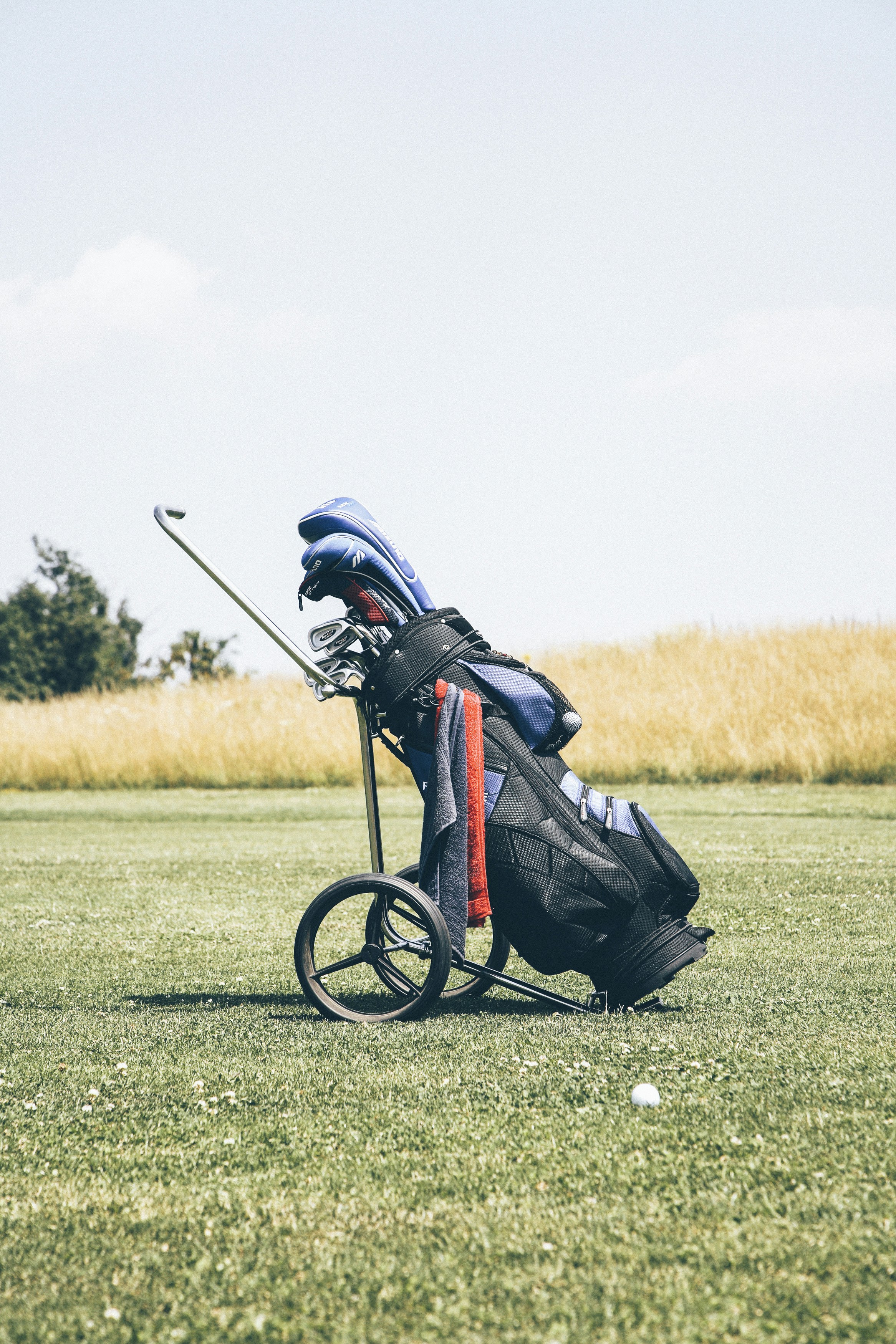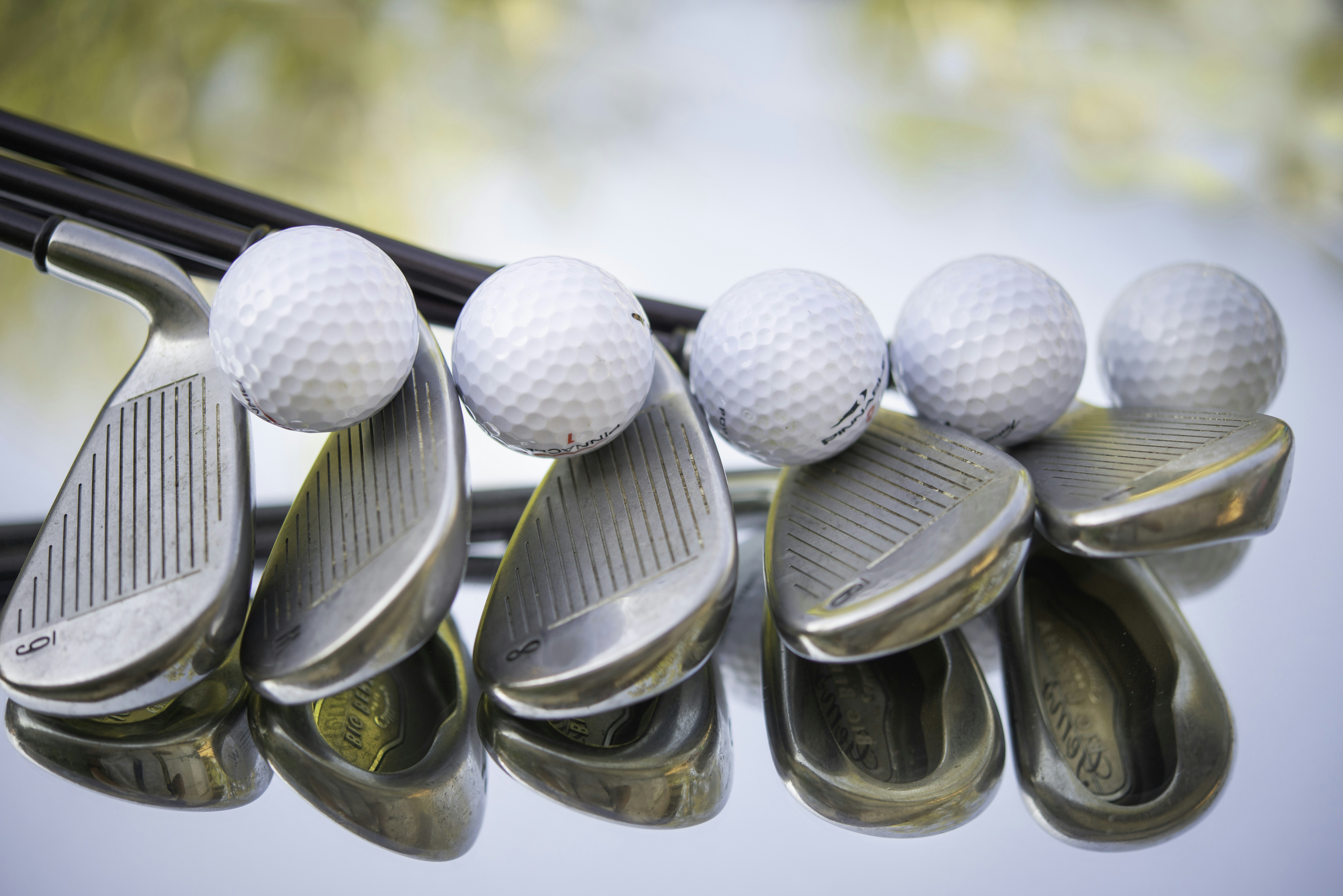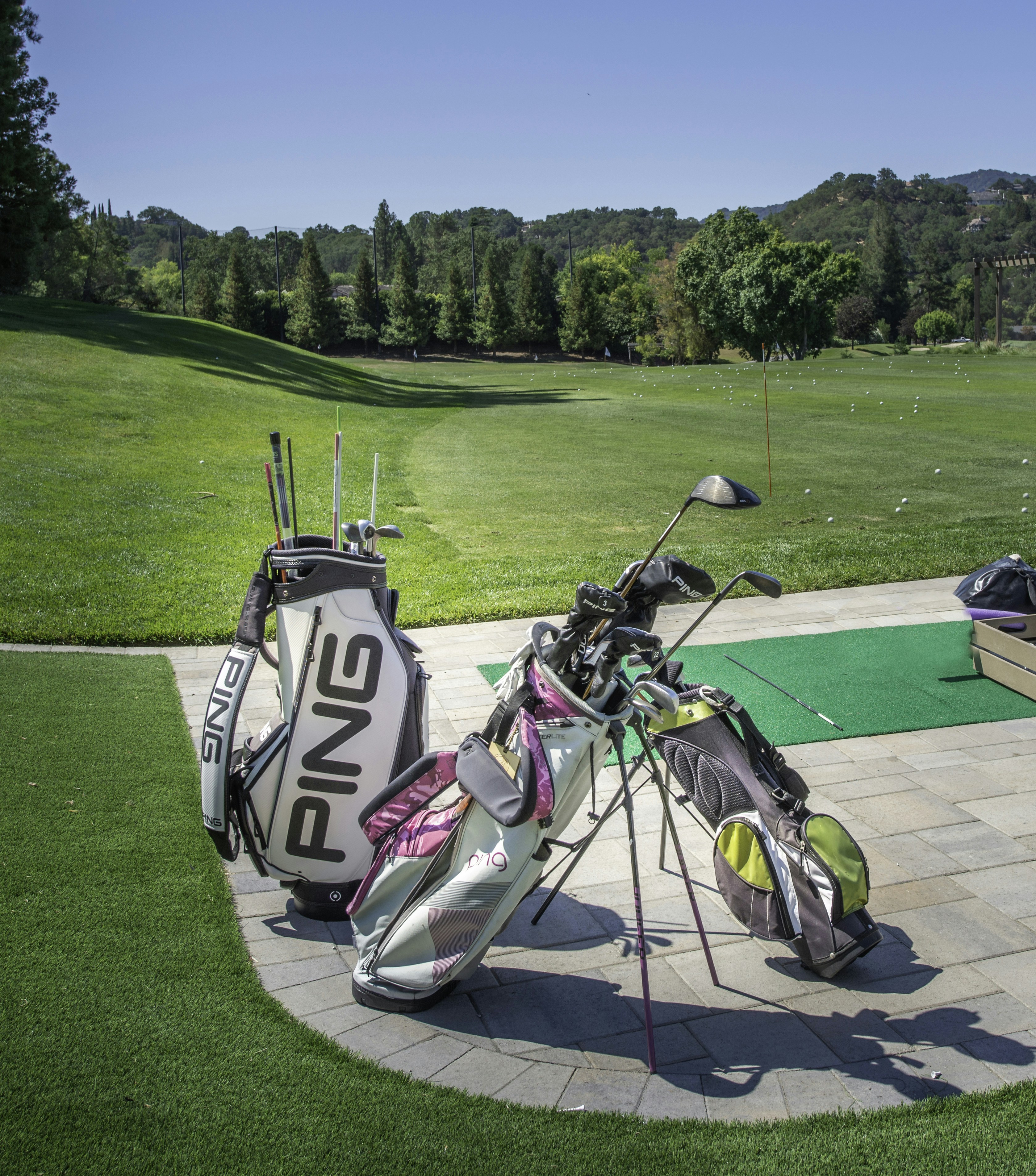If you’re new to the game of golf or simply looking to brush up on your knowledge, it’s essential to understand the purpose behind each golf club in your bag. Each club has its own unique characteristics and is designed to help you navigate the course with precision and efficiency. From drivers that give you distance off the tee to putters that offer control and finesse on the greens, this article will give you a comprehensive overview of what different golf clubs are for. So, let’s dive right in and unlock the secrets behind these essential tools of the game.
1. Woods
When it comes to golf clubs, woods are essential for those long shots off the tee. Woods are designed to help you achieve maximum distance and accuracy in your drives. There are different types of woods that serve different purposes on the golf course.
1.1. Driver
The driver is the largest and longest club in your bag. It is commonly used for tee shots on long par-4s and par-5s. The driver has a large head and a long shaft, which allows for maximum power and distance. This club is specifically designed to help you hit the ball as far as possible off the tee.
1.2. Fairway Woods
Fairway woods are designed for shots that are taken from the fairway or semi-rough. These clubs have smaller heads compared to the driver, which provides better control and accuracy. Fairway woods are commonly used for long shots when you need to hit the ball a significant distance and stay on the fairway.
1.3. Utility Woods
Utility woods, also known as hybrid clubs, are a cross between a wood and an iron. These clubs are designed to be versatile and useful in a variety of situations. Utility woods are often used for shots from difficult lies or when you need to hit the ball high and far but still maintain control. These clubs are particularly helpful when you need to navigate through thick rough or hit the ball out of a bunker.
2. Irons
Irons are another essential set of clubs that every golfer should have in their bag. They are used for shots that require more precision and control, typically from the fairway or rough. Irons come in different types, each with a specific purpose.
2.1. Long Irons
Long irons, usually numbered from 1 to 4, have a lower loft and longer shaft compared to shorter irons. These clubs are designed to help you hit the ball over longer distances with a lower trajectory. Long irons are commonly used for shots from the fairway or rough when you need to cover more distance.
2.2. Mid-Irons
Mid-irons, numbered from 5 to 7, have a slightly higher loft compared to long irons. They provide a good balance between distance and control. Mid-irons are commonly used for shots from the fairway or rough, especially when there are obstacles such as bunkers or water hazards to navigate.
2.3. Short Irons
Short irons, usually numbered from 8 to PW (pitching wedge), have the highest loft among all the irons. These clubs allow you to hit the ball high in the air and land it softly on the green. Short irons are primarily used for approach shots to the green, as well as shots around the green when you need precision and control.
3. Wedges
Wedges are a special category of irons that are designed for shots that require a high trajectory and a short distance. They are especially useful for shots around the green and in bunkers. There are several types of wedges, each with its own specific purpose.
3.1. Pitching Wedge
The pitching wedge is one of the most commonly used wedges. It has a higher loft compared to the other irons, allowing you to hit high shots with a short distance. The pitching wedge is often used for approach shots to the green from a fairway lie.
3.2. Gap Wedge
The gap wedge, also known as the approach wedge, is designed to bridge the gap between the pitching wedge and the sand wedge. It has a slightly higher loft than the pitching wedge, making it suitable for shots that require a shorter distance and a higher trajectory. The gap wedge is commonly used for approach shots when you need more loft and control than a pitching wedge.
3.3. Sand Wedge
As the name suggests, the sand wedge is primarily used for shots from bunkers or deep rough. It has a high loft and a wide sole, which helps the club glide through the sand or rough without digging in. The sand wedge is designed to hit the ball high and land it softly on the green, making it essential for getting out of difficult situations around the green.
3.4. Lob Wedge
The lob wedge has an even higher loft than the sand wedge, making it ideal for shots that require a high trajectory and a short distance. The lob wedge is commonly used for shots around the green when you need to hit the ball high and stop it quickly. It is especially useful when there are obstacles such as bunkers or water hazards between you and the pin.
4. Putters
Putters are arguably the most important clubs in your bag. They are specifically designed for the final strokes on the green, where precision and control are crucial.
4.1. Blade Putters
Blade putters have a traditional design with a simple, thin blade-like head. They provide excellent feedback and feel, allowing you to have better control over your putts. Blade putters are commonly used by golfers who prefer a more traditional look and feel in their equipment.
4.2. Mallet Putters
Mallet putters have a larger, more rounded head compared to blade putters. The larger head provides better forgiveness and stability on off-center hits. Mallet putters are known for their alignment aids, which help golfers aim their putts more accurately. They are popular among golfers who prefer a more forgiving and technologically advanced putter.
4.3. Mid-Mallet Putters
Mid-mallet putters combine features of both blade putters and mallet putters. They have a slightly larger head compared to blade putters, providing some forgiveness on off-center hits. Mid-mallet putters also offer alignment aids to assist with aiming. They are a popular choice for golfers who want a balance between traditional design and modern technology.
5. Hybrids
Hybrids, also known as rescue clubs, are a combination of irons and woods. They are designed to replace difficult-to-hit long irons and provide better forgiveness and distance.
5.1. Long Hybrids
Long hybrids are typically numbered from 2 to 4 and are used as alternatives to long irons. They have a larger head and a shorter shaft compared to long irons, making them more forgiving and easier to hit. Long hybrids are often used for shots from the fairway or rough when you need to cover a significant distance with more control.
5.2. Mid-Hybrids
Mid-hybrids are typically numbered from 5 to 6 and are designed to replace mid-irons. They offer a balance between distance and control, making them suitable for shots from the fairway or rough. Mid-hybrids are often used when you need to hit the ball high and stop it quickly on the green.
5.3. Short Hybrids
Short hybrids, typically numbered from 7 to 9, are designed to replace short irons. They have a higher loft and provide better control and precision on approach shots to the green. Short hybrids are particularly useful when you need to hit the ball over obstacles or land it softly on the green.
6. Specialty Clubs
In addition to the standard set of clubs, there are a few specialty clubs that golfers may choose to add to their bag for specific shots or situations.
6.1. Chipper
A chipper is a club designed for shots around the green when you need to chip the ball onto the green and roll it towards the hole. It has a more upright and angled face compared to a traditional wedge, which helps keep the ball low and rolling. Chippers are particularly useful when you need to get the ball close to the hole but don’t want to risk using a putter.
6.2. Bump and Run Wedge
A bump and run wedge, sometimes called a low-lofted wedge or an approach wedge, is designed for shots around the green that require a low trajectory and a lot of roll. Its lower loft helps keep the ball low, allowing it to roll out more instead of stopping quickly. Bump and run wedges are commonly used on firm and fast greens or when there is a lot of green to cover before reaching the hole.

7. Putters vs. Wedges for Chipping
When it comes to chipping around the green, golfers often face the dilemma of whether to use a putter or a wedge. Both clubs have their advantages and it ultimately depends on the situation and personal preference.
7.1. Benefits of Using a Putter
Using a putter for chipping can be beneficial when you have a lot of green to work with and need to keep the ball rolling smoothly towards the hole. Putters provide consistency and control and are especially useful on firm and fast greens. They help keep the ball low and rolling, reducing the risk of getting caught in the rough or bunker near the green.
7.2. Benefits of Using a Wedge
Using a wedge for chipping allows for higher shots with more spin and stopping power. Wedges are ideal when you need to clear obstacles such as rough, bunkers, or water hazards before reaching the green. They provide more loft and make it easier to get the ball up in the air and stop it quickly on the green. Wedges are particularly helpful when there is less green to work with and you need to get the ball close to the hole.
8. Choosing the Right Club for Your Game
Choosing the right club for your game can significantly impact your performance on the golf course. There are a few factors to consider when selecting golf clubs.
8.1. Consider Your Skill Level
Your skill level is an important factor to consider when choosing clubs. If you are a beginner, it may be more beneficial to start with a set of forgiving and game improvement clubs that are designed to be easier to hit. As you progress and improve, you can gradually transition to more specialized clubs that suit your game.
8.2. Understand the Club’s Purpose
Each club in your bag has a specific purpose and is designed to perform certain shots. Understanding the purpose of each club and how it can benefit your game is essential. Take into consideration the distances you need to cover, the types of shots you commonly encounter, and the areas of your game that need improvement.
8.3. Seek Professional Advice
If you are unsure about which clubs to choose, it’s always a good idea to seek professional advice from a club fitter or golf instructor. They can assess your swing, analyze your playing style, and recommend clubs that are suitable for your game. A custom club fitting session can also ensure that the clubs you choose are properly fitted to your height, swing speed, and other individual factors.

9. The Importance of Shaft Flex and Loft
When selecting golf clubs, it’s important to consider the shaft flex and loft. These two factors can significantly impact the performance and feel of the clubs.
9.1. Determining Shaft Flex
Shaft flex refers to the amount of flex or bend in the shaft when you swing the club. The two main types of shaft flex are stiff and regular, but there are also options such as extra stiff and senior flex. The flex of the shaft can affect the trajectory, accuracy, and distance of your shots. Generally, players with faster swing speeds tend to benefit from stiffer shafts, while players with slower swing speeds benefit from more flexible shafts. It’s crucial to get properly fitted for the right shaft flex to optimize your performance.
9.2. Understanding Loft Angles
Loft refers to the angle of the clubface relative to the ground. Different clubs have different loft angles, which affect the trajectory and distance of your shots. Clubs with higher loft angles, such as wedges, have a steeper angle of ascent and produce shots that go higher but shorter. Clubs with lower loft angles, such as drivers and long irons, produce shots that go lower but longer. Understanding the loft angles of your clubs and how they fit into your game is important for selecting the right club for the job.
10. Club Fitting and Customization
Club fitting is a process that involves assessing various aspects of your swing and analyzing the characteristics of different clubs to determine the best fit for your game.
10.1. Importance of Club Fitting
Club fitting is essential because it ensures that your clubs are properly matched to your physical characteristics, swing mechanics, and playing style. A well-fitted set of clubs can maximize your performance by optimizing factors such as distance, accuracy, trajectory, and consistency. Club fitting takes into account variables such as shaft length, shaft flex, clubhead design, lie angle, grip size, and more.
10.2. Customization Options
In addition to club fitting, customization options allow you to tailor your clubs to your preferences and specific needs. Customization can include adjustments to shaft length, grip size, clubhead weight, and lie angle. It’s important to work with a professional club fitter or golf shop that offers customization services to ensure that any modifications made to your clubs are appropriate for your swing and game.
In conclusion, understanding the different types of golf clubs and their purposes can greatly improve your performance on the golf course. From driving off the tee with the driver to chipping and putting with the wedges and putters, each club has its own role and impact on your game. Take the time to consider your skill level, seek professional advice, and get properly fitted for clubs that suit your game. With the right clubs in your bag, you’ll be able to enjoy the game of golf to its fullest and achieve greater success on the course.



